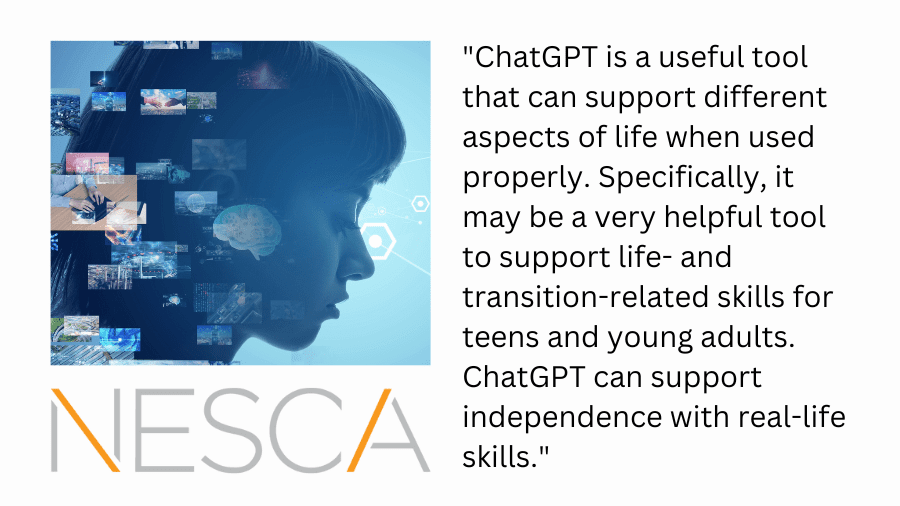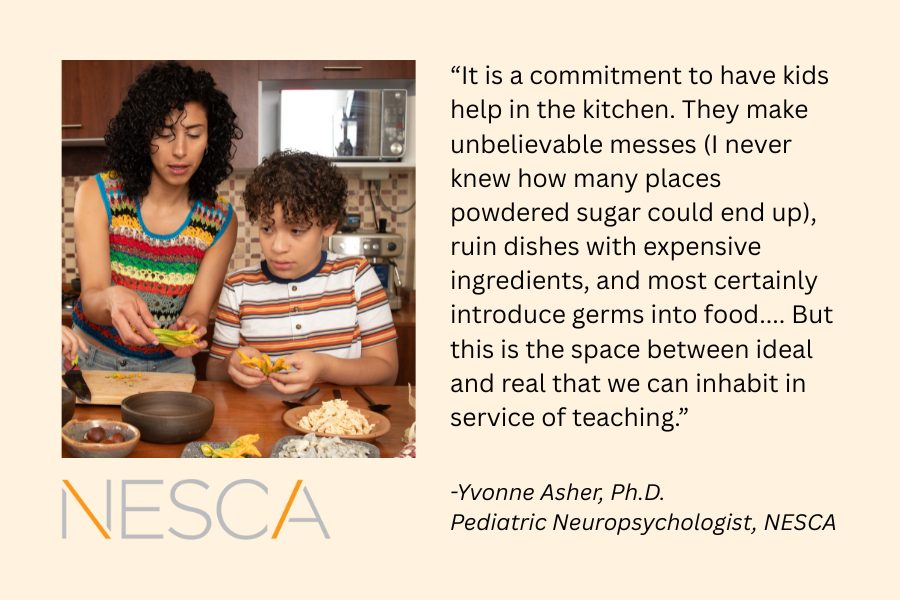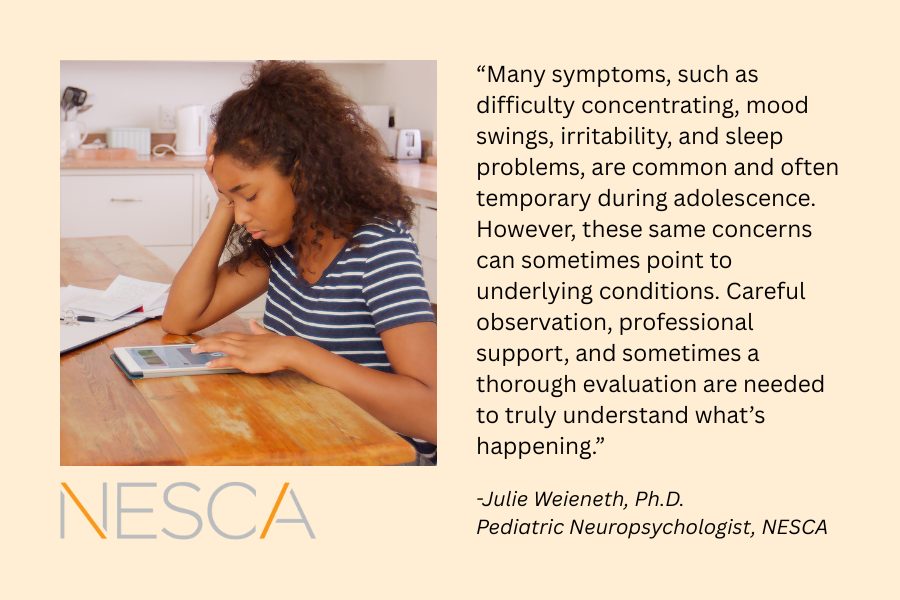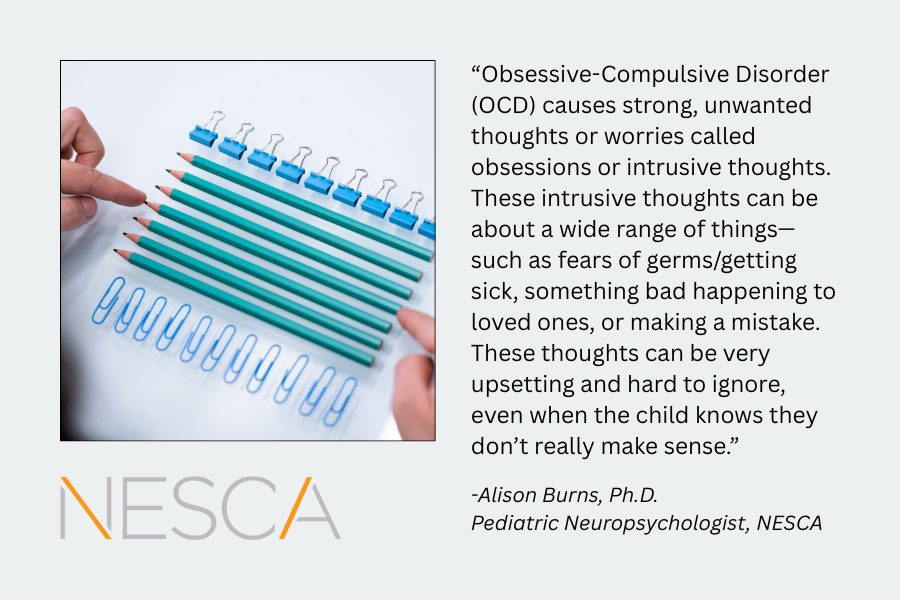 By Madeline Manning, Ph.D.
By Madeline Manning, Ph.D.
Pediatric Neuropsychologist, NESCA Hingham
Growing Grateful Kids: Tips for Fostering Resilience Through Gratitude
Gratitude, or the quality of being thankful and the readiness to appreciate the good in life, is especially important for youth today. It helps promote resilience, emotional well-being, and positive relationships in an increasingly complex and fast-paced world. By fostering gratitude, young people can develop a stronger sense of self-worth and perspective, empowering them to navigate challenges with optimism and empathy. Parents and caregivers play a vital role in helping children and teens develop the practice of gratitude. Research in resilience and positive psychology consistently shows that practicing gratitude helps individuals overcome adversity, enhances everyday well-being, improves mood, and strengthens interpersonal relationships. Cultivating gratitude can also enhance emotional regulation, social skills, and academic performance.
Why Gratitude Matters for Resilience
Our brains adapt and change in response to what we consistently notice and value in our environments. Encouraging youth to attend to and emphasize positive experiences helps strengthen neural pathways that make it easier for them to recognize the positives and protective factors in their lives. This supports well-being and contributes to better mental and physical health (improved immune function, better sleep, reduced cortisol levels).
Studies show that children and teens who practice gratitude regularly experience increased happiness, life satisfaction, and positive emotions. They also report fewer negative emotions and lower rates of depression and anxiety. By focusing on what is present and positive, rather than what is missing, gratitude helps youth cope with challenges and stress in healthier ways.
How Gratitude Builds Resilience and Well-being
- Emotional regulation: Practicing gratitude engages brain regions involved in emotional processing, helping children manage difficult feelings and recover from disappointment more efficiently.
- Social connection: Gratitude strengthens empathy and prosocial behavior, making it easier for children to form and maintain relationships with others.
- Coping skills: Focusing on positive aspects of situations, particularly during tough times, helps children find meaning and hope, buffering against stress and adversity.
Evidence-Based Ways to Build Gratitude in Daily Life
Incorporating gratitude practices into everyday life does not need to require a major time commitment or dramatic changes to your schedule. Gratitude can be woven into everyday routines through simple, meaningful shifts in daily practices:
- Mealtime gratitude: During meals, take turns sharing one thing each family member is grateful for, big or small. Regular sharing of gratitude strengthens family bonds and increases positive emotions.
- Finding silver linings: During challenges or setbacks, gently help children identify a lesson learned, a person who helped, or a small comfort. This reframing fosters adaptive coping.
- Mindful moments in nature: Encourage children to pause and notice something pleasant in their environment, such as a flower in bloom or a bird chirping. Bringing attention to the present moment and combining mindfulness with gratitude can help reduce anxiety and improve mood.
- Expressing thanks: Encourage thank-you notes, drawings, or messages to teachers, friends, or relatives. Expressing appreciation and being thoughtful of others builds empathy and fosters deeper social connection.
- Bedtime reflections: End the day by naming three good things that happened. This simple habit can improve sleep quality and increase optimism.
Modeling Gratitude: The Parent’s Role
Children learn gratitude best by observing adults around them. Consistently expressing appreciation and integrating these or similar practices into the daily routine helps make gratitude a family value.
Research-backed strategies include:
- Verbalizing appreciation: Let children hear adults thank others and explain why their actions mattered to them.
- Acknowledging effort: Thank children for their hard work, kindness, or cooperation, not just when positive outcomes have been attained.
- Sharing personal gratitude: Reflect openly on moments from the day that inspire thankfulness.
These small acts show children that gratitude is an everyday mindset, not something reserved for special occasions or major achievements.
Tools to Record and Share Gratitude
Making gratitude tangible can help children and teens integrate it into their lives. A few examples of simple ways to record what we are grateful for include:
- Gratitude journals: Writing down daily reflections has been linked to increased happiness and decreased depressive symptoms in youth.
- Digital apps: Online apps like Grateful or Happyfeed can make it easy for teens to track positive moments throughout the day and reflect back on moments of gratitude over time.
- Gratitude jars: Fill a jar with notes of things that went well, things you appreciate, or things you are looking forward to. Read them together as a family at the end of the week or month.
- Photo projects: Encourage older kids (and help younger kids) to capture one photo a day of something they appreciate.
- Family gratitude boards: Post sticky notes with moments of thanks for everyone to see.
Planting Seeds of Resilience for the Future
Much like strengthening a muscle, gratitude is a skill that grows stronger with practice. Creating opportunities to notice and name what is good and supportive builds happier, healthier children and nurtures resilient, thoughtful young adults who can find meaning and hope even in difficult times.
Gratitude does not mean ignoring life’s challenges. Rather, it is about recognizing the positive, fostering connection, and building the emotional strength to navigate whatever comes their way.
Integrating gratitude practices into daily life gives children a lifelong gift: the ability to find joy, connection, and resilience, no matter what the world may bring.
References:
Basit, A., Ali, R., Rahman, S., & Shah, A. A. (2024). Exploring how the practice of gratitude can strengthen interpersonal relationships, enhance mental well-being, foster emotional resilience, and promote greater social connectedness and cooperation. Review of Education, Administration & Law, 7(4), 427-441.
Bohlmeijer, E. T., Kraiss, J. T., Watkins, P., & Schotanus-Dijkstra, M. (2021). Promoting gratitude as a resource for sustainable mental health: Results of a 3-armed randomized controlled trial up to 6 months follow-up. Journal of happiness studies, 22(3), 1011-1032.
Klibert, J., Rochani, H., Samawi, H., Leleux-LaBarge, K., & Ryan, R. (2019). The impact of an integrated gratitude intervention on positive affect and coping resources. International Journal of Applied Positive Psychology, 3(1), 23-41.
Kurian, R. M., & Thomas, S. (2023). Gratitude as a path to human prosperity during adverse circumstances: a narrative review. British Journal of Guidance & Counselling, 51(5), 739-752.
Zainoodin, N. N., Hutasuhut, I. J., & Bakar, M. A. A. (2021). Gratitude and its relationship to resilience and academic performance among university students. Journal of Cognitive Sciences and Human Development. Vol, 7, 2.
About Dr. Madeline Manning
Dr. Madeline Manning is committed to providing comprehensive, collaborative evaluations that help families better understand their child’s unique neurocognitive, developmental, learning, and social-emotional profiles. She specializes in the assessment of toddlers, school-aged children, adolescents, and young adults. Her expertise involves working with youth exhibiting a diverse range of clinical presentations, including neurodevelopmental disorders, such as autism spectrum disorder, attention and executive functioning deficits, learning disabilities, developmental delays, intellectual disabilities, and associated emotional challenges. Dr. Manning is also trained in the assessment of children with medical complexities, recognizing how health conditions can impact a child’s development and functioning. She partners closely with families to develop practical, personalized recommendations that support each individual’s success and growth at home, in school, and within the community.
families better understand their child’s unique neurocognitive, developmental, learning, and social-emotional profiles. She specializes in the assessment of toddlers, school-aged children, adolescents, and young adults. Her expertise involves working with youth exhibiting a diverse range of clinical presentations, including neurodevelopmental disorders, such as autism spectrum disorder, attention and executive functioning deficits, learning disabilities, developmental delays, intellectual disabilities, and associated emotional challenges. Dr. Manning is also trained in the assessment of children with medical complexities, recognizing how health conditions can impact a child’s development and functioning. She partners closely with families to develop practical, personalized recommendations that support each individual’s success and growth at home, in school, and within the community.
To book a neuropsychological evaluation at NESCA, complete NESCA’s online intake form.
NESCA is a pediatric neuropsychology practice and integrative treatment center with offices in Newton, Plainville, and Hingham, Massachusetts; Londonderry, New Hampshire; the greater Burlington, Vermont region; and Coral Gables, Florida, serving clients from infancy through young adulthood and their families. For more information, please email info@nesca-newton.com or call 617-658-9800.

 By Ann Helmus, Ph.D.
By Ann Helmus, Ph.D. practicing neuropsychology for 35 years and has been director of NESCA’s Neuropsychology practice for nearly three decades, continuously training and mentoring neuropsychologists to meet the highest professional standards.
practicing neuropsychology for 35 years and has been director of NESCA’s Neuropsychology practice for nearly three decades, continuously training and mentoring neuropsychologists to meet the highest professional standards.


 meaningful skills in order to reach their goals. She has spent the majority of her career working in a private school for students with ASD. She has also spent some time working in an inpatient mental health setting. Lyndsay uses occupation-based interventions and strategies to develop life skills, executive functioning, and emotional regulation. While completely her doctoral degree at MGH Institute of Health Professions, Lyndsay worked with the Boston Center for Independent Living to evaluate transition age services. She uses the results from her research to deliver services in a way that is most beneficial for clients. Specifically, she focuses on hands-on, occupation-based learning that is tailored the client’s goals and interests.
meaningful skills in order to reach their goals. She has spent the majority of her career working in a private school for students with ASD. She has also spent some time working in an inpatient mental health setting. Lyndsay uses occupation-based interventions and strategies to develop life skills, executive functioning, and emotional regulation. While completely her doctoral degree at MGH Institute of Health Professions, Lyndsay worked with the Boston Center for Independent Living to evaluate transition age services. She uses the results from her research to deliver services in a way that is most beneficial for clients. Specifically, she focuses on hands-on, occupation-based learning that is tailored the client’s goals and interests.
 About the Author
About the Author
 delays, learning disabilities, attention difficulties and executive functioning challenges. She often works with children whose complex profiles are not easily captured by a single label or diagnosis. She particularly enjoys working with young children and helping parents through their “first touch” with mental health care or developmental concerns.
delays, learning disabilities, attention difficulties and executive functioning challenges. She often works with children whose complex profiles are not easily captured by a single label or diagnosis. She particularly enjoys working with young children and helping parents through their “first touch” with mental health care or developmental concerns.

 research and academia for over 30 years. She is a national consultant and speaker on program design and the inclusion of children and adolescents with special needs, especially those diagnosed with Autism Spectrum Disorder (ASD). Prior to joining NESCA, Ms. Lucci was the Principal of the Partners Program/EDCO Collaborative and previously the Program Director and Director of Consultation at MGH/Aspire for 13 years, where she built child, teen and young adult programs and established the 3-Ss (self-awareness, social competency and stress management) as the programming backbone. She also served as director of the Autism Support Center. Ms. Lucci was previously an elementary classroom teacher, special educator, researcher, school psychologist, college professor and director of public schools, a private special education school and an education collaborative.
research and academia for over 30 years. She is a national consultant and speaker on program design and the inclusion of children and adolescents with special needs, especially those diagnosed with Autism Spectrum Disorder (ASD). Prior to joining NESCA, Ms. Lucci was the Principal of the Partners Program/EDCO Collaborative and previously the Program Director and Director of Consultation at MGH/Aspire for 13 years, where she built child, teen and young adult programs and established the 3-Ss (self-awareness, social competency and stress management) as the programming backbone. She also served as director of the Autism Support Center. Ms. Lucci was previously an elementary classroom teacher, special educator, researcher, school psychologist, college professor and director of public schools, a private special education school and an education collaborative.
 families better understand their child’s unique neurocognitive, developmental, learning, and social-emotional profiles. She specializes in the assessment of toddlers, school-aged children, adolescents, and young adults. Her expertise involves working with youth exhibiting a diverse range of clinical presentations, including neurodevelopmental disorders, such as autism spectrum disorder, attention and executive functioning deficits, learning disabilities, developmental delays, intellectual disabilities, and associated emotional challenges. Dr. Manning is also trained in the assessment of children with medical complexities, recognizing how health conditions can impact a child’s development and functioning. She partners closely with families to develop practical, personalized recommendations that support each individual’s success and growth at home, in school, and within the community.
families better understand their child’s unique neurocognitive, developmental, learning, and social-emotional profiles. She specializes in the assessment of toddlers, school-aged children, adolescents, and young adults. Her expertise involves working with youth exhibiting a diverse range of clinical presentations, including neurodevelopmental disorders, such as autism spectrum disorder, attention and executive functioning deficits, learning disabilities, developmental delays, intellectual disabilities, and associated emotional challenges. Dr. Manning is also trained in the assessment of children with medical complexities, recognizing how health conditions can impact a child’s development and functioning. She partners closely with families to develop practical, personalized recommendations that support each individual’s success and growth at home, in school, and within the community.





 attention deficit disorders, communication disorders, intellectual disabilities, and learning disabilities. She particularly enjoys working with children and their families who have concerns regarding an autism spectrum disorder. Dr. Milana has received specialized training on the administration of the Autism Diagnostic Observation Schedule (ADOS).
attention deficit disorders, communication disorders, intellectual disabilities, and learning disabilities. She particularly enjoys working with children and their families who have concerns regarding an autism spectrum disorder. Dr. Milana has received specialized training on the administration of the Autism Diagnostic Observation Schedule (ADOS).
Connect with Us